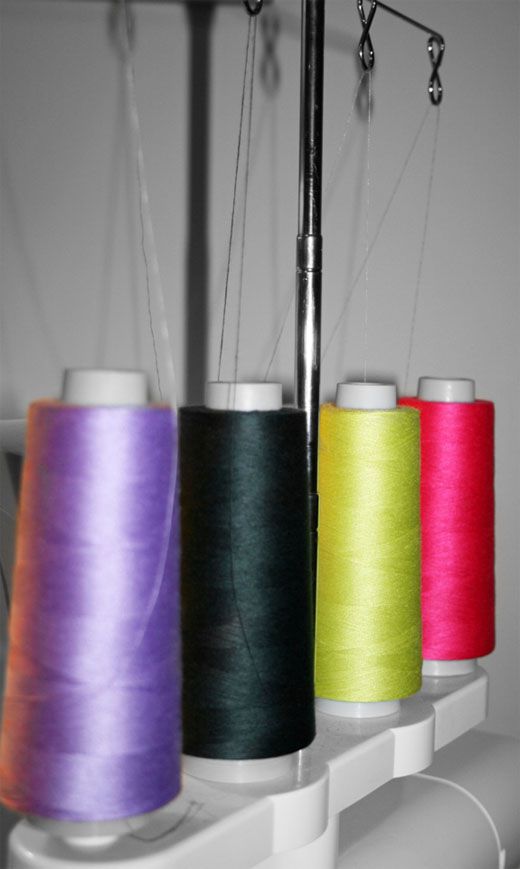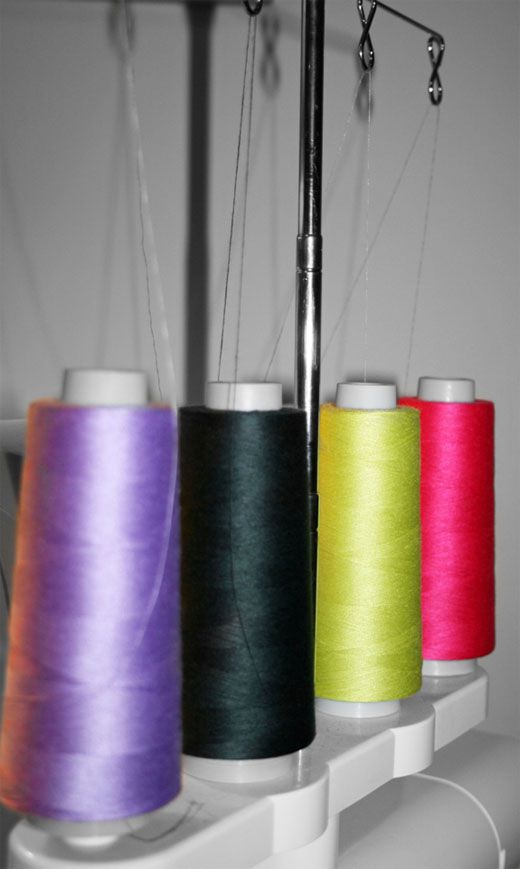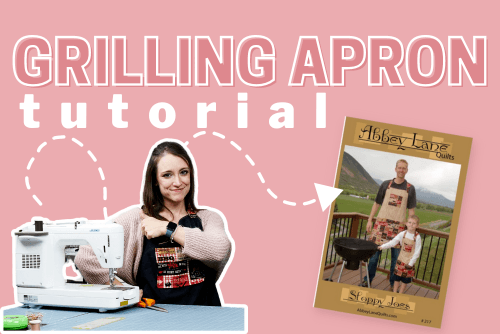
With a Serger, you get a two for one deal; construction and finishing. You can completely finish a pair of pajama pants in 20 minutes, including cutting. However, you also get the some awesome decorative elements. For instance, a rolled hem on a chiffon scarf using decorative thread or the vintage t-shirt look using a flatlock stitch.
If you have ever tried to use a Serger, also known as an Overlock Machine, you know they can be a bit temperamental, which, in turn, makes said user temperamental. Flying spools of serger thread, anyone? I, for one, wasn’t on speaking terms with my Serger for almost a year. Opening a shiny new piece of equipment is exciting, but also very intimidating, especially one with 4-5 thread stands and a razor sharp knife! Using a Serger for the first time is like being a new mom. There are so many new things to learn, it can be a bit overwhelming. But with a little help, the experience will be extremely rewarding and you will be showing off your new “baby” to everyone.
I’ve been using Serge with Confidence by Nancy Zieman as a reference. It’s kind of an encyclopedia for using your serger. It has all the stitches you can make with your serger organized in a table format, including what each stitch is best for and tips on using them. I found this book to be more helpful than my owner’s manual. You can also find books at the library on Serging.
There are a few tricks that have helped me while learning to use my serger.
Make sure your thread is flossed between the tension dials. This simple mistake drove me nuts trying to figure out what was wrong.

Use the cones provided with your serger to ensure the thread spools don’t wiggles all over the place while serging.
Label all the knobs using some clear tape and permanent marker.

Keep a record of your stitches on scrap fabric: name and knob settings.

Thread the loops in the correct order. Upper looper first, then lower looper.
Use quality thread. It’s such a pain to re-thread a serger. Using quality thread is just one more thing you don’t have to think about. Maxi lock and Toldi-lock are good quality threads. Maxi lock is definitely the favorite in the serging community. We currently sell both Maxi lock and Toldi-lock by Gutermann.
Correct needles apply to sergers the same as a regular sewing machine.
Use ribbon or clear elastic in seams where stability is needed.
When in doubt, sew the seam first, then serge it, at least until you are completely comfortable.
It’s a lot to take in, but sergers are pretty awesome. Try mastering a basic hemming stitch, then expand when you are more comfortable. Most importantly, don’t give up! There are tons of videos and resources out there to help. Get serging!








